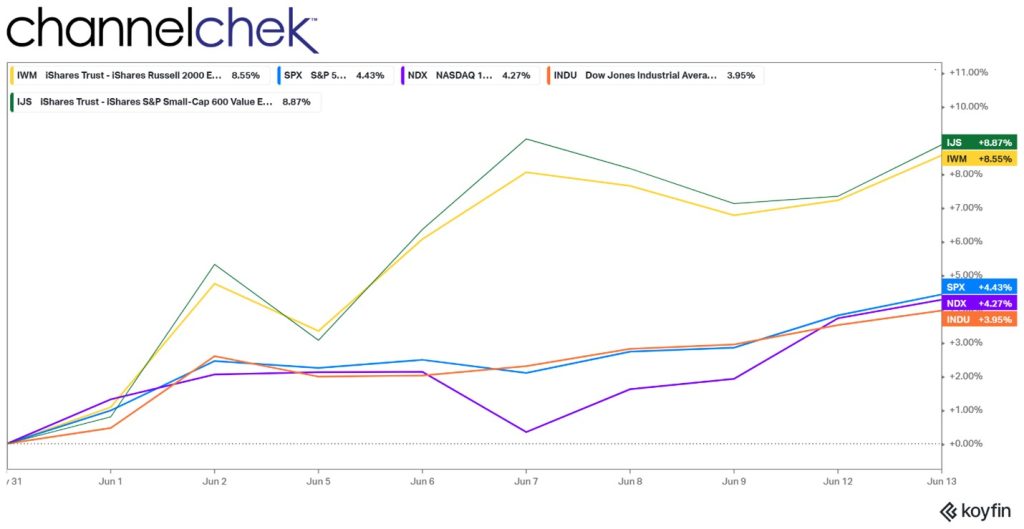
June Quad-Witching is the Friday Before a Three-Day Weekend
Double, triple, and quadruple witching hours are often characterized by increased stock market activity as traders manage expiring positions in the last hours of trading. Friday, June 16th is a quadruple witching which may demonstrate increased activity as it leads into a weekend where markets are closed on Monday.
The term “quadruple witching hour” is used to describe the simultaneous expiration of stock options, stock index futures, and stock index options and single stock futures contracts on the same day. This happens only four times a year on the third Friday just before a quarter end. The same expiration date of all three types of stock derivatives can cause unusual swings as expiring derivative positions can cause increased trading volume and unusual price action in the underlying assets as traders close, roll, or offset expiring derivative positions, particularly in the final hour of trading.
Options Expirations and Futures Contracts
Stock index options, and stock options, are financial instruments that grant the holder the contractual right, but not the obligation, to buy (call option), or sell (put option) a specific quantity of an underlying security or value of an underlying index at a predetermined price (strike price) within a specified period. The final day of the period is known as the option’s expiration date.
Stock index options are options based on the broad market indexes, such as the S&P 500 or the NASDAQ-100. These options give investors exposure to the overall market’s performance rather than individual stocks.
Stock options work similarly, but are based not on index values, but on stock price.
Stock index futures and single stock index futures are contracts that obligate (not optional) traders to buy or sell an index at a specific price or a single stocks at a specific price on a future date.
Expiration Fridays often witness heightened trading activity, as investors attempt to rebalance portfolios and positions. This can cause increased volume and produce significant price fluctuations in the underlying, impacting both individual stocks and the overall market.
Arbitrage Opportunities
Though much of the trading in closing, opening, and offsetting futures and options contracts during witching days is related to the squaring of positions, this increased, and at times, frantic activity can create price inefficiencies, this may provide short-term arbitrage opportunities for those skilled and quick enough.
The arbatrageurs would generate even more volume into the close on quadruple witching days as traders attempt to profit on small price imbalances with large trades that may execute a buy and sell in seconds.
Additional Reasons To Care About Triple Witching
As four types of derivatives, with related underlying indexes and securities expire, traders, especially before a long weekend, will often seek to close out all of their open positions well in advance of the close. This can lead to increased trading volume and intraday swings. Traders with large short positions are particularly exposed to price movements that could be more difficult to manage leading up to expiration. Arbitrageurs try to take advantage of abnormal price action, this actually serves to keep prices more in synch.
The higher trading volumes can be one-sided and potentially result in wider bid-ask spreads and greater slippage. Investors mindful of the potential one-sided liquidity challenges may decide to wait for the smoke to clear the following week, or see if they can benefit by feeding into demand if they can.
Traders who are skilled at interpreting trends, and have great execution, may find quick opportunities to make money during these multiple expiration dates.
Take Away
Quadruple expiration dates, which happen four times a year, can have significant implications for traders and investors. It is best to, at a minimum, know the dates to understand unusual price moves. Understanding the intricacies of option expiration, and multiple witching hours helps investors navigate markets. Advanced traders may even find ways to capitalize on the moves intraday.
June 2023 is unusual in that the quadruple witching hour comes before a three-day weekend; this could push more volatility to earlier periods during the afternoon.
Managing Editor, Channelchek








